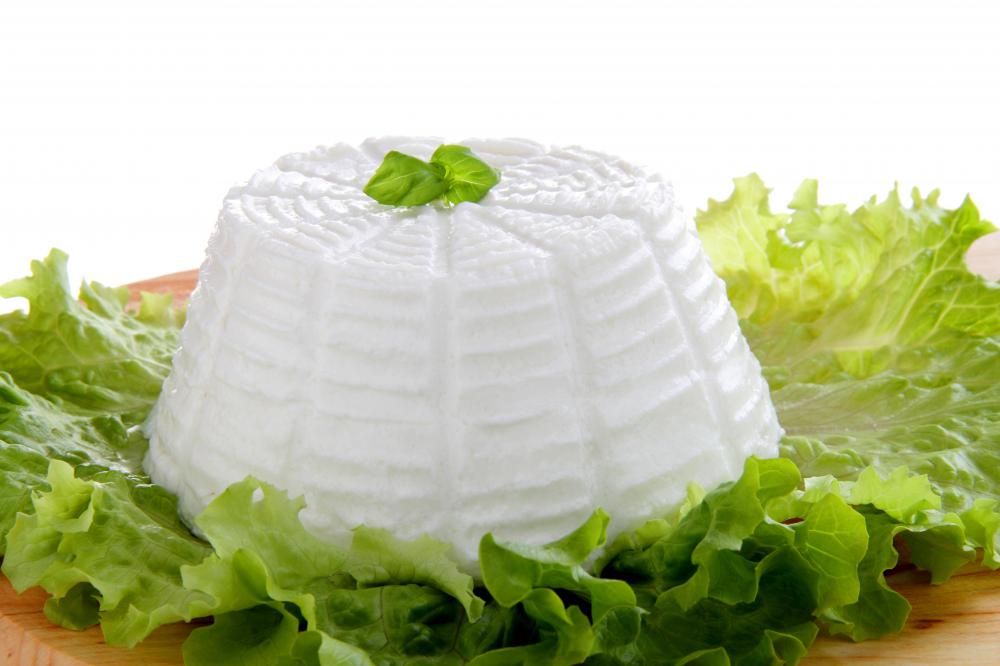At DelightedCooking, we're committed to delivering accurate, trustworthy information. Our expert-authored content is rigorously fact-checked and sourced from credible authorities. Discover how we uphold the highest standards in providing you with reliable knowledge.
What Are the Best Tips for Freezing Ricotta?
Freezing ricotta cheese is somewhat controversial among home chefs and cheese enthusiasts. The smooth, creamy texture of ricotta can be sacrificed by freezing, so the process is generally not highly recommended. There are, however, some tricks to use that make freezing ricotta more successful even if it is not the ideal preparation. Only freezing ricotta for a short time, thawing it properly, and only using it as a secondary ingredient are the best tips for freezing ricotta.
Ideally, ricotta cheese can be used fresh and not subjected to freezing temperatures that compromise its texture. If this is not possible, however, the cheese can be briefly frozen. Whole milk ricotta is the best candidate for freezing because the richness from the milk fat will help maintain some of the original creaminess. Skim milk ricotta is more likely to become grainy and unpleasant.

The best way to freeze ricotta is in the original unopened packaging, which will provide the most protection from crystallization or freezer burn. In the event that using the original packaging is not realistic, smaller portions of ricotta can be frozen in airtight plastic containers. Wrapping the ricotta in plastic wrap or aluminum foil or sealing it in plastic bags is not recommended because the cheese will release liquid while it thaws. Even properly sealed and stored, ricotta should not be frozen for more than two months.

When the ricotta is about to be used, it must be thawed in the refrigerator for approximately 24 hours. Using a microwave to speed up the process is not recommended because it will further compromise the texture. Similarly, allowing the ricotta to defrost at room temperature could cause spoiling and is not recommended. After 24 hours in the refrigerator have passed, the ricotta should be thoroughly defrosted and able to be stirred. Some liquid is likely to collect on top of the cheese: this liquid should be stirred back into the cheese, not drained off.
A creative tip for freezing ricotta is to prepare a full recipe using the ricotta and then freeze the resulting dish. For example, ricotta that is sealed into ravioli or baked into lasagna will stand up to freezing far better than the cheese alone. Similarly, a double batch of the original recipe can be made and the excess frozen instead of just freezing the leftover ricotta.
If freezing ricotta in a finished dish is not possible or desirable, the thawed cheese will be best used in a dish where it is both cooked and not the featured ingredient. Cooking the ricotta will help disguise the altered textured, as will combining it with multiple other ingredients. Using frozen ricotta as a prominent ingredient, such as in a cheesecake, will most likely reveal the compromised texture of the cheese.
AS FEATURED ON:
AS FEATURED ON:












Discuss this Article
Post your comments